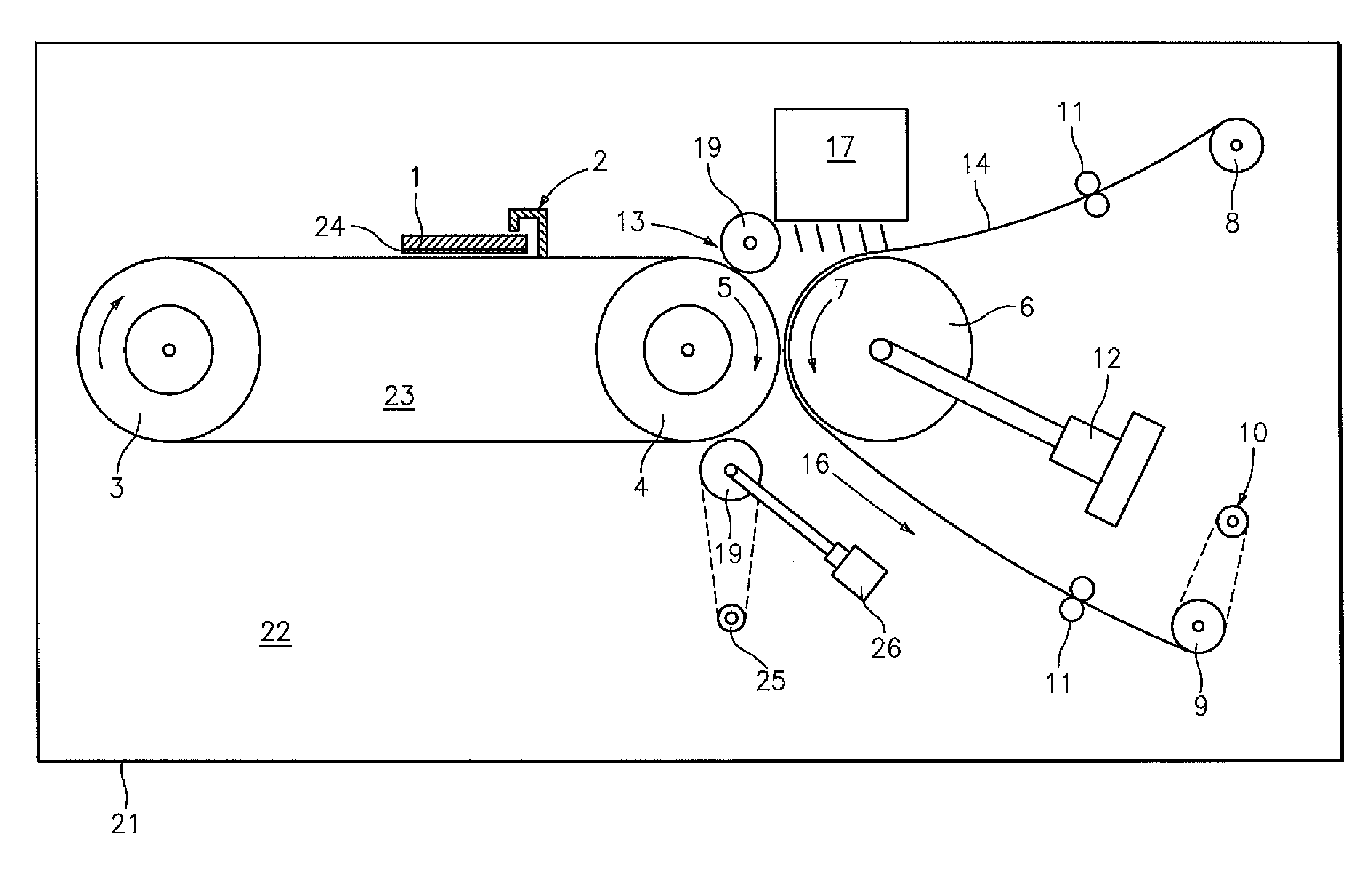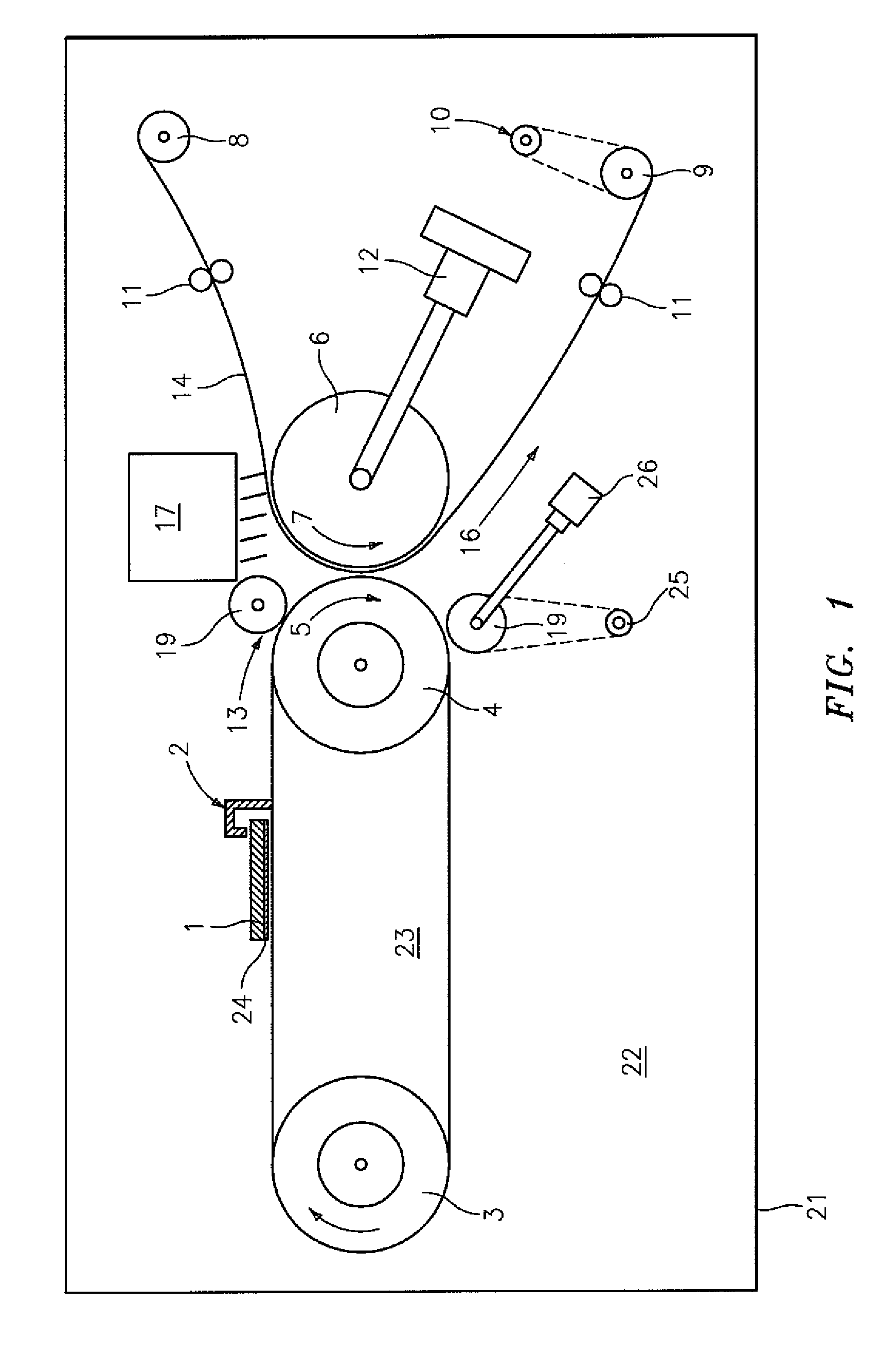Method and Apparatus for Thermal Processing of Photosensitive Printing Elements
- Summary
- Abstract
- Description
- Claims
- Application Information
AI Technical Summary
Benefits of technology
Problems solved by technology
Method used
Image
Examples
example 1
[0040]Several photosensitive printing elements are prepared that are capable of undergoing thermal development, containing actinic radiation polymerized portions and non-polymerized portions. For this purpose Digital MAX photopolymer printing elements (available form MacDermid Printing Solutions, LLC.) were selectively ablated in the desired image with an IR laser and then exposed to U.V. radiation through the in-situ mask thereby creating polymerized and unpolymerized areas. These types of thermally developable plates are well known to the art, and any such type of plate would be well suited for this invention and yield comparable results. The type of photopolymer is generally not important.
[0041]These plates are thermally developed using the preferred apparatus described above, in which the heatable roller is heated to 145° C. A 2 kw I.R. heater was also used to pre-heat the printing element and from 1-5 passes through the process were employed until the unpolymerized areas were r...
example 2
[0043]Photosensitive printing elements are prepared and developed in the same manner as Example 1 except for the use of an uncoated smoothing hot roller and the temperature of the heatable roller with the absorbent material is set to 170° C. The surface of the smoothing roller is smooth and it is heated to 170° C. The photosensitive printing element is contacted with the smoothing roller once after it has already been contacted with the absorbent material and the heatable roller. The arithmetical surface roughness of the relief structure is again determined in the same manner as Example 1. It is found to be 1279.69 nm.
example 3
[0044]Photosensitive printing elements are prepared and developed in the same manner as Example 2, except the printing elements are now contacted with the smoothing roller a total of 4 times consecutively. The arithmetical surface roughness of the relief structure is determined in the same manner as Example 1. It is found to be 987.14 nm.
PUM
| Property | Measurement | Unit |
|---|---|---|
| Mean roughness | aaaaa | aaaaa |
| Mean roughness | aaaaa | aaaaa |
| Mean roughness | aaaaa | aaaaa |
Abstract
Description
Claims
Application Information
 Login to View More
Login to View More - R&D
- Intellectual Property
- Life Sciences
- Materials
- Tech Scout
- Unparalleled Data Quality
- Higher Quality Content
- 60% Fewer Hallucinations
Browse by: Latest US Patents, China's latest patents, Technical Efficacy Thesaurus, Application Domain, Technology Topic, Popular Technical Reports.
© 2025 PatSnap. All rights reserved.Legal|Privacy policy|Modern Slavery Act Transparency Statement|Sitemap|About US| Contact US: help@patsnap.com


